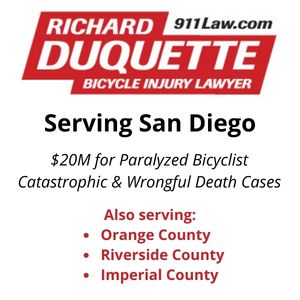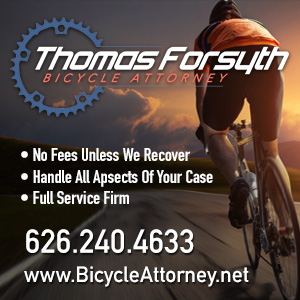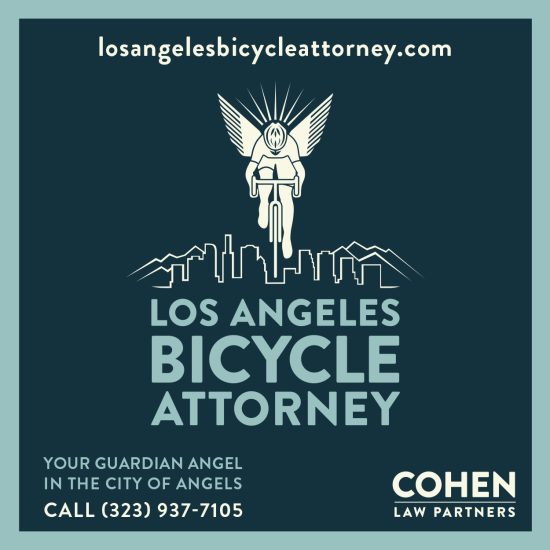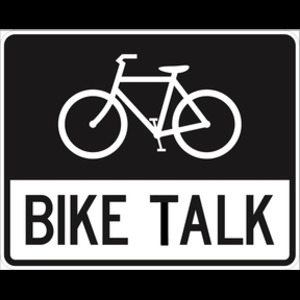
My apologies to anyone who sent me items for today’s post.
I’m really struggling to get through this one tonight, after going on a diabetic rollercoaster yesterday.
So thank you to everyone who sent something. I am very grateful, even if I don’t thank you by name.
……..
They get it.
Shockingly enough.
AAA, which is not exactly known for siding with traffic safety advocates, conducted a recent study about the dangers of high speeds.
As you can see below, the key finding were that lowering speed limits improves safety, raising speed limits makes things worse, and neither one makes a big difference when it comes to travel times.
Which should put the final nail in the coffin of the deadly 85th Percentile Law, which puts speeding drivers in charge of setting speed limits, and which AAA has long claimed as one of their biggest accomplishments.
But it probably won’t.
Because as Friday the 13th tells us, things like this are hard to kill, no matter how evil they are.
Key Findings
The Foundation study found:
- Raising posted speed limits was associated with increased crash frequencies and rates for two of the three Interstate Highways examined.
- Lowering posted speed limits was associated with decreased crash frequencies and rates for one of the two principal arterials examined.
- Changes in travel times were small in response to both raised and lowered speed limits.
Then there’s this.
AAA recommends that changes in posted speed limits should consider a range of factors, including but not limited to the type of road, surrounding land use, and historical crash data. AAA supports automated speed enforcement, but programs must be carefully implemented to maintain community support, prioritize equity and consistently drive improved safety.
Yes, AAA actually endorsed speed cams. Someone tell the state legislature.
Stat.
……….
Family members remember Kai Torres Bronson, the heroic 24-year old mountain biker who died after helping rescue stranded hikers in the extreme heat of Carrizo Gorge last weekend.
They make the case for others to learn from this tragedy, and avoid putting yourself in danger.
Right now on @10News ⬇️
Loved ones remember Kai, 24, who died on a trail in Jacumba last weekend.
Kai was mountain biking with a group when they came across a group of hikers in distress. The hikers were rescued, but Kai eventually collapsed pic.twitter.com/Rey7euIYrA— Natalie Chuck KGTV (@NatalieChuck) July 23, 2023
………
The Department of DIY has struck in San Francisco, where someone has added their own accurate, if tongue-in-cheek traffic safety signs to the highly contentious and largely detested new centerline bike lane on Valencia Street, including signs reading “We regret this bike lane” and “¯\_(ツ)_/¯ good luck cyclists.”
Meanwhile, both critics and opponents agree the rollout of the bike lanes could have gone a lot better, while SF Gate asks if the solution for the dangerous street is making it worse.
………
Great short documentary about the Athens Twilight Crit, variously described as the “Super Bowl of American cycling” and “a knife fight in the dark.”
And featuring an extended cameo by Orange County cyclist Eddy Huntsman.
………
This is who we share the road with.
https://twitter.com/ABC7/status/1682480636337049600
………
The war on cars may be a myth, but the war on bikes just keeps on going.
Seriously? A motor vehicle website demonstrates a severe case of windshield bias, saying an ebike is the best way to accessorize — not replace — your car.
Residents of a bucolic Denver street got out the torches and pitchforks to attack a new neighborhood greenway — or last least, sharply worded comments. Meanwhile, bike riders just want to get home in one piece.
Someone has sabotaged a new Victoria, British Columbia bike lane, strewing screws and nails across the road surface.
A British triathlete will need surgery to fix a broken collarbone after a laughing car passenger pushed her off her bike and into a ditch.
Sometimes, it’s the people on two wheels behaving badly.
An Oxford, England man faces charges for killing an 81-year old woman while “furiously” riding his bike on a footpath.
………
Local
Why am I not surprised? Streetsblog reports that “Metro and LADOT quietly omitted and downgraded extensive bike and walk improvements approved and funded” for the new Little Tokyo station on the Regional Connector train line, while omitting other features at the Grand and Broadway Metro stations.
The LAPD hosted their 3rd Annual Ride to Remember memorial bike ride through the Northwestern San Fernando Valley on Sunday. And for the 3rd year in a row, neglected to tell us in advance so we could join them.
State
Streetsblog’s Melanie Currie write about Encinitas Assemblymember Tasha Boerner’s confusing actions in pulling the popular Stop As Yield bill, while introducing a bill that may or may not require licenses for ebike riders, now or in the future; they already require a similar license in Israel. Thanks to Oceanside bike lawyer and BikinginLA sponsor Richard Duquette for the heads-up.
In news that shouldn’t surprise anyone, a civil grand jury in San Mateo County has found a clear, systemic bias against bicyclists in both law enforcement and the legal system. Similar grand juries could likely reach the same results about any county in California, including Los Angeles.
National
NACTO says oversized vehicles designed to increase danger to people walking and riding bicycles shouldn’t receive five-star safety ratings, and wants you to tell that to the US Department of Transportation.
An Oregon coalition is working to repeal the mandatory bike lane use law, which forces riders to use the bike lane if there is one on the roadway, regardless of whether it might be substandard or dangerous, or whether the bicyclists are traveling at speed. California has the same dangerous law, which needs to be revoked.
Heartbreaking news from Oregon, where a 76-year old man riding his bike to work was killed by a semi driver just 30 feet from his job. Thirty feet.
Applications open tomorrow for the next round of ebike rebates in Denver, which are expected to go fast. Meanwhile, we’re all still waiting for California’s ebike rebate plan to finally roll out.
The world’s biggest recreational multi-stage bike ride rolled out in Iowa on Sunday, as the state marks the 50th Anniversary of the legendary RAGBRAI; National Public Radio is once again fielding a team.
An Iowa widow calls for greater bike safety, 16-years after the unsolved hit-and-run that killed her bike-riding husband.
A Houston homeowner blasted a bike rider with a shotgun after they got into an argument, and the bicyclist refused to leave his property; whether the man’s actions were legal will depend largely on whether the victim was in the street or on the homeowner’s property when he was shot, thanks to Texas’ stand your ground law.
A 13-year old Chicago boy was lucky to survive when he was grazed by a bullet in a drive-by shooting while riding his bike; no word on whether he was the intended target.
Cleveland plans to build out the city’s urban bike network to prioritize equity and extend the health benefits of biking to the city’s underserved populations.
The Georgia coast could soon be getting a more than 200-mile bike path.
Tragic news from Florida, where a man died nearly two months after he was the victim of a hit-and-run while riding his bike; the 35-year old driver could be charged. Seriously? Could be?
Meanwhile, a 33-year old Florida driver will spend the next 45 years behind bars for the high-speed, meth-fueled crash that killed a couple riding a tandem bike two years ago. Even I think that sentence is just a tad extreme.
International
Momentum Magazine says celebrate Barbie by embracing the movie’s “bold and playful fashion trend” for your bike. I’ll pass.
A Victoria, British Columbia bicyclist divides the city’s bike lanes into Outright Disasters, Questionable Judgments and Marginal Successes, with one Excellent Idea — with an asterisk
Montreal bike riders called attention to their plight by forming a people-protected bike lane.
Hackaday says last week’s bankruptcy of Dutch ebike maker VanMoof demonstrates the risks of cloud-connected transport, after the lack of an encryption key threatened to brick owners’ bikes.
An Italian associate professor of architecture and urbanism refused to pay a fine equivalent to $50 for riding over a pedestrian crossing in 2017, insisting he didn’t break any law and it was just the actions of an overzealous cop; the fine has now increased nearly 20-fold to over $932.
Competitive Cycling
To the surprise of no one after demolishing two-time Tour de France champ Tadej Pogačar last week, defending champ cyclist Jonas Vingegaard rolled into Paris the winner of this year’s Tour de France by a whopping seven and a half minute margin.
American Sepp Kuss “somersaulted” out of a top ten finish when another rider’s blown tire took him out in a crash on Saturday’s stage 20 of the Tour, finishing the stage on pure grit with a badly bloodied face and elbow, and leaving him in 12th place as the peloton rolled into Paris.
The Guardian looks at the Tour’s ongoing history of fans failing to get the hell out of the way.
The first stage of the 2023 Tour de France Femmes rolled on Sunday, now that the men have gotten out of the way. As usual, read it on Yahoo if Bicycling blocks you.
British cyclist Josh Quigley struggles to make the rare leap from suicide survivor to competing in the world championships.
Tragic news from Austria, where a 17-year old Italian cyclist was killed in the first stage of the Upper Austria Tour; the race was cancelled the following day.
Finally…
This is how it looks if someone steals your bike. Your next bike helmet could inflate on impact.
And won’t someone think of the poor, unfortunate cars?
………
Be safe, and stay healthy. And get vaccinated, already.
Oh, and fuck Putin

















